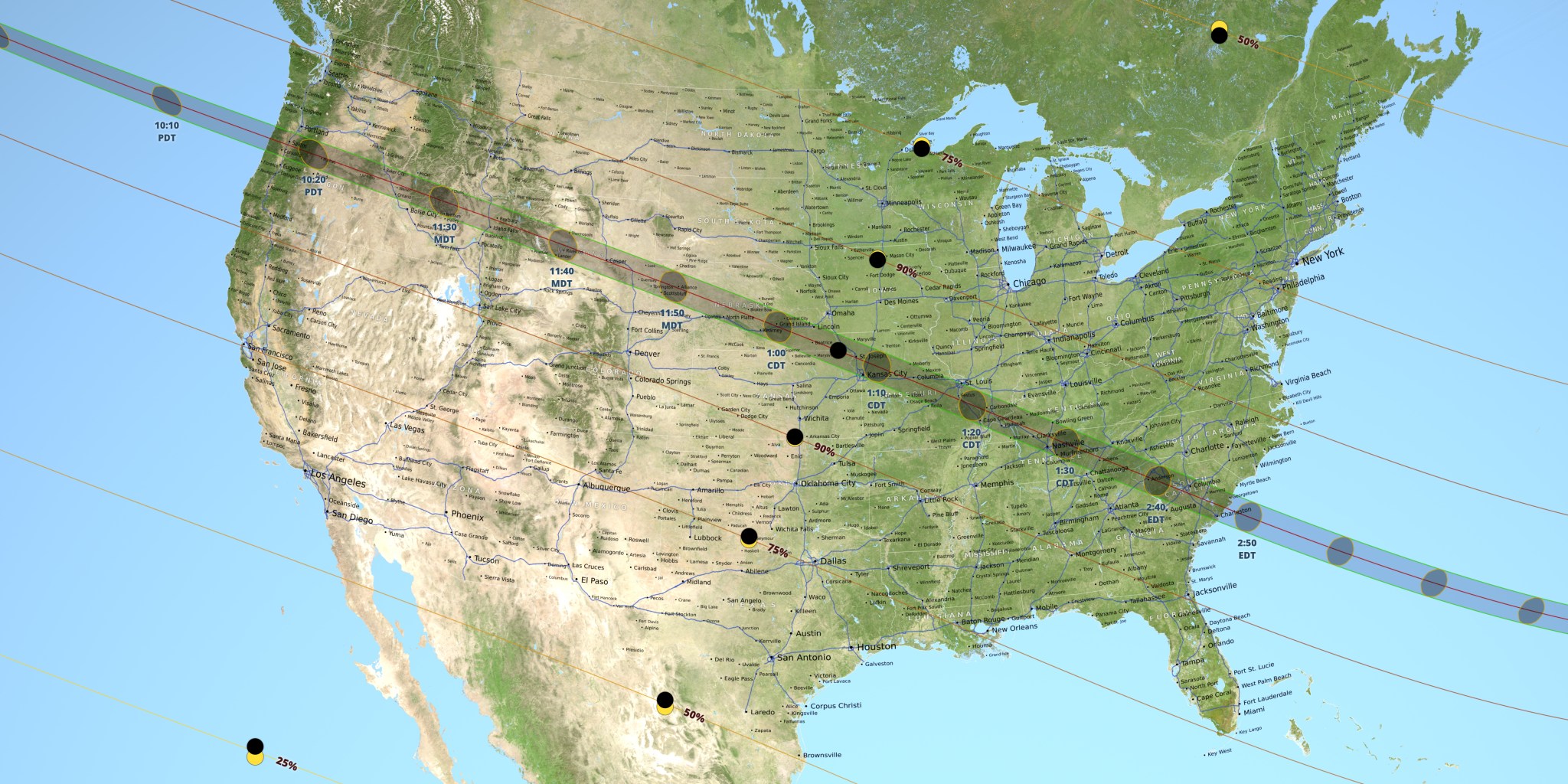On Aug. 21, a total solar eclipse will cross the United States from coast-to-coast for the first time in 99 years. Moving from west to east, the moon’s shadow will shroud 14 states in darkness for more than two minutes in the middle of the day. To celebrate, NASA’s Glenn Research Center encourages you to experience the wonder of the eclipse with them at multiple events in the community.
Along the Path of Totality
On the path of totality, Glenn will support NASA’s official live broadcast of the total eclipse at the Capital Eclipse event in Jefferson City, Missouri. Tune in to NASA TV to see Dr. Janet Kavandi, Glenn’s center director and Missouri native, speak about space weather, space communications and astronaut health and safety live on the Jefferson City segment of NASA’s eclipse programming beginning at 2:09 p.m. (EST) on Aug. 21.
On Aug. 20 and 21, Capital Eclipse visitors can partake in eclipse-themed activities, discover something new inside NASA’s Journey to Tomorrow Trailer and have a souvenir picture taken in the photo booth.
Local Plans
In Cleveland, an 80 percent eclipse will be viewable, weather permitting, beginning at 1:06 p.m. and lasting until 3:51 p.m. (EST). Join Glenn’s outreach team as they support three local eclipse events by providing interactive eclipse-themed activities, broadcasting NASA TV’s live coverage of the eclipse and engaging visitors. You can find Glenn at:
- Great Lakes Science Center on Aug. 19 – 21 from 10 to 5 p.m.
NASA Glenn will provide a solar telescope and an eclipse-themed photo booth. EVA, the inflatable astronaut, will make an appearance. The science center will broadcast NASA TV’s live eclipse coverage throughout the event on Aug. 21. - Edgewater Park on Aug. 21 from 1 to 4 p.m.
Learn about the solar eclipse from Glenn’s staff, use a solar telescope to safely view the sun and watch NASA TV’s live broadcast of the eclipse from the path of totality. - Geauga County Park District’s Observatory Park on Aug. 21 from noon to 4 p.m.
Immerse yourself in interactive eclipse-themed activities, use a solar telescope to safely view the sun, learn about the eclipse from Glenn’s staff, watch a lunar robotics demonstration and have a souvenir picture taken in Glenn’s photo booth.
Safety
Looking directly at the sun is unsafe except during the brief total phase of the solar eclipse, when the moon entirely blocks the sun. This will only happen along the roughly 70-mile-wide path of totality stretching from Oregon to South Carolina.
In Cleveland, the only safe way to look directly at the uneclipsed or partially eclipsed sun is through special-purpose solar filters, such as “eclipse glasses” or hand-held solar viewers.
Refer to the American Astronomical Society’s Reputable Vendors of Solar Filters & Viewers page for a list of manufacturers and authorized dealers of eclipse glasses and handheld solar viewers verified to be compliant with the ISO 12312-2 international safety standard for such products.
For more information about eclipse safety, visit:
For more information about NASA Glenn, visit:
-end-
Debbie Lockhart
Glenn Research Center
216-433-8655
deborah.j.lockhart@nasa.gov




























